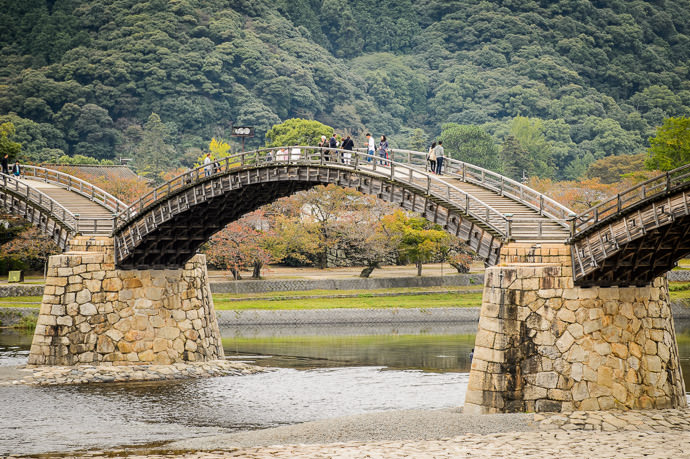
Nikon D4 + Voigtländer 125mm f/2.5 — 1/250 sec, f/5.6, ISO 450 — map & image data — nearby photos
The Kintai Bridge (錦帯橋)
Iwakuni, Japan
The load photo on the other day's post (Why Does Photography with an iPad Look so Silly?) showed the picturesque Kintai Bridge in the background.
According to its Wikipedia page, it was first built 340 years ago, but was destroyed by a typhoon 60 years ago and rebuilt 50 years ago, and refurbished 10 years ago.
It's a few miles from my father-in-law's childhood home, so we stopped by during a visit last month.

Nikon D4 + Voigtländer 125mm f/2.5 — 1/250 sec, f/2.5, ISO 200 — map & image data — nearby photos
More Arches
than McDonald's
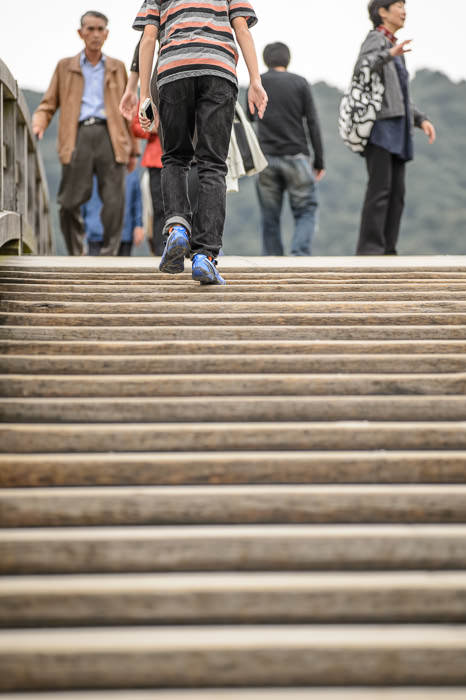
Nikon D4 + Voigtländer 125mm f/2.5 — 1/320 sec, f/2.5, ISO 100 — map & image data — nearby photos
Fairly Steep
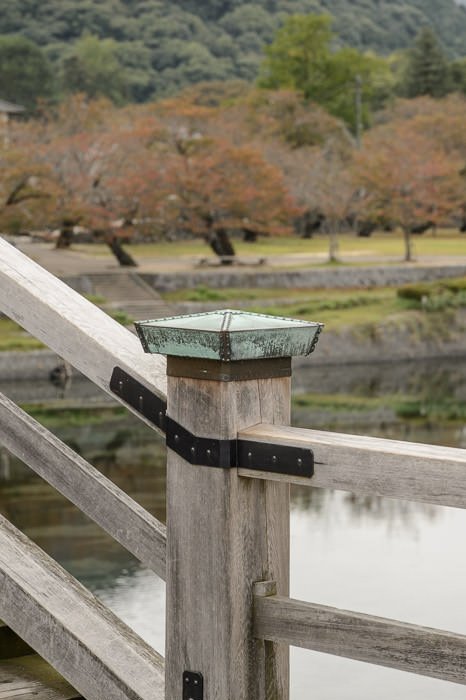
Nikon D4 + Voigtländer 125mm f/2.5 — 1/250 sec, f/8, ISO 640 — map & image data — nearby photos
Angle of Incidence

Nikon D4 + Voigtländer 125mm f/2.5 — 1/640 sec, f/2.5, ISO 100 — map & image data — nearby photos
Locked
Some of the huge stones at the top of the piers were locked to other stones via small bowtie-shaped insets, four of which (of presumably six total) for one stone are visible in the shot above. (What's the right word for these things? Sort of similar to “lynchpin”, but that's clearly not the right one...)
Near the north end of the bridge is an apparently-famous ice-cream shop with more than 100 flavors. According to the sign, there were 120 flavors the day we visited...
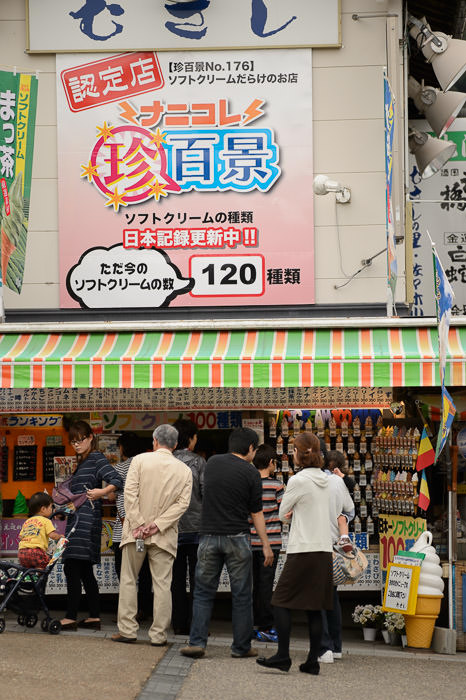
Nikon D4 + Voigtländer 125mm f/2.5 — 1/640 sec, f/2.5, ISO 100 — map & image data — nearby photos
むさし 100種類アイス
Some “flavors” are nothing more than various things sprinkled on vanilla, and perhaps many are just whipped in after you order, but there are a lot of strange results to choose from...

Nikon D4 + Voigtländer 125mm f/2.5 — 1/320 sec, f/2.5, ISO 100 — map & image data — nearby photos
Menu
(very partial)
Some of the flavors visible...
89 Banana Yogurt
Seems fine, but then...
91 Natto (pungent fermented soybeans)
92 Soy Sauce
93 Seven-Spice Mixture (on the spicy-hot side)
94 Habanero
95 Curry
96 Ramen
97 Chazuke
... and then we come to what I ordered, 98, Wasabi (“Japanese horseradish”, the green paste you get with sushi).
It was good, but it took a while before I noticed anything besides the plain vanilla ice cream that was its base. I think they had mixed in some very mild wasabi bits or something. Eventually I started to notice the flavor, and it was quite pleasant. I like wasabi. Your mileage would be different if you didn't. 🙂
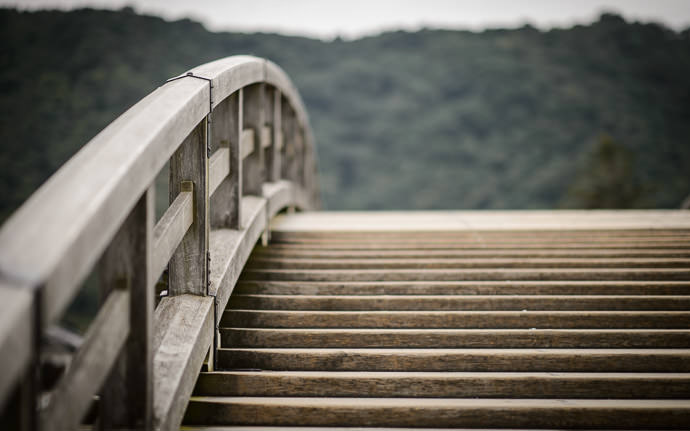

The “bowtie” shaped stones locking the larger ones together are called “Keys” in woodworking, (logical for something that locks. not?) so we may assume the same could be used in stonework. I, too, would be interested if there is a different name.
The joint in the stone is a “butterfly key” (also called a “bowtie key”). It is a type of dovetail joint used in woodworking, and apparently in stone work too.
Great compositions on the bridge photos. It’s a very interesting structure.
Here is a link to a stone working glossary:
http://www.marble-institute.com/consumers/glossary.pdf
Check out the “dovetail” entry.
Those stone links are properly called bowtie keys or butterfly keys. Sometimes stone, sometimes metal, sometimes wood, depending on what your making/ building with.
Mike.
Apogee . ?
What is the wood, looks like Elm, the way it is weathered. It is exquisite .
The picture of the girl though the trees is amusing, looks like she is in some sort of precarious pose on the edge ! of course you noticed that.
Hah, actually, I hadn’t! —Jeffrey